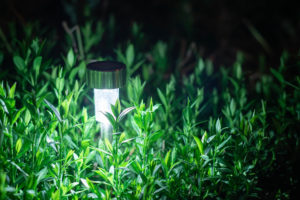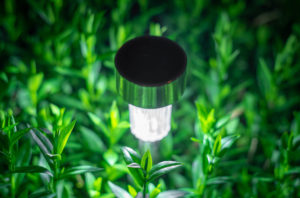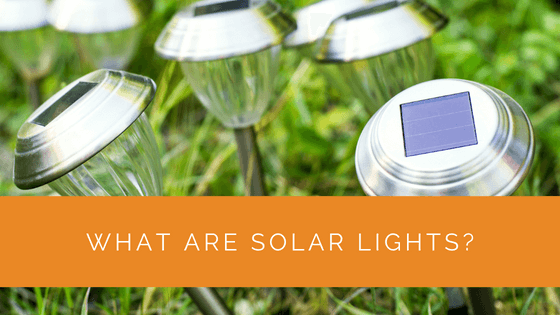Solar lights are a versatile and common technique for providing high-quality outdoor space lighting, particularly during the warmer and sunnier months. They don’t cost a lot, require minimal upkeep, and can be used by anyone for no cost.
Moreover, they provide attractive aesthetic benefits while accomplishing useful goals. Also, their total performance is comparable to that of conventional incandescent lights. They serve both an aesthetic and practical purpose, adding extra protection to your home.
Contents
- 1 Key Takeaways
- 2 How Do Solar Lights Function?
- 3 Advantages of Solar-Powered Lights
- 4 Typical Applications for Solar Lights
- 5 Other Solar Lighting Considerations
- 6 Case Study: Enhancing Outdoor Spaces with Solar Lights
- 7 Expert Insights From Our Solar Panel Installers About Solar Lights
- 8 Our Expertise in Solar Lights
- 9 Conclusion
Key Takeaways
- Solar lights are a cost-effective and low-maintenance outdoor lighting solution, offering aesthetic appeal and practicality while reducing energy costs.
- Solar lights harness sunlight through a solar panel, using rechargeable batteries, LED lights, a light sensor, and a toggle switch to illuminate when it gets dark.
- Solar lights have a wide range of applications, including decorative and safety/security lighting, and can operate effectively in various weather conditions, making them a sustainable and versatile lighting choice.
How Do Solar Lights Function?
Solar lights are powered by the sun throughout the day and illuminate the area when darkness falls. Since they convert sunlight to operate, they work independently on the electrical wiring of the home or building in which they are installed.
Solar energy lights are made up of five segments:
- A tiny solar panel
- Rechargeable batteries
- A collection of LED lights
- A light detector
- A toggle switch
Here is a detailed understanding of its segments.
The Solar Panel
The solar panel’s PV modules allow for its tiny size. Like other photovoltaic/PV cells, these cells have light-sensitive materials that transform the sun’s energy into a small amount of usable electricity. Although direct sunlight is best for most purposes, the sun’s beams don’t need to be horizontal at all times.

LED Lighting
LED solar lights are compact bulbs that last far longer and are much more convenient than conventional lightbulbs. Their qualities, in addition to their dazzling light, make them perfect for use as solar-powered lights during nighttime.
Light Sensor
The sensor in solar path lights is called a photoresistor in technical terms. When night falls, this sensor activates solar power and turns it off when morning comes.
This solar-powered lamp component typically also includes a voltage-controlling sensor, preventing rechargeable batteries from being overcharged even when exposed to prolonged or exceptionally bright sunlight.
Switch (On/Off)
Due to the presence of a light sensor, a manual switch may be extra. The logic behind this is that there can be times when turning off the lights is better, such as when running on battery power.

Advantages of Solar-Powered Lights
- Use solely renewable energy and no electricity from outside sources.
- Solar lighting requires nearly no upkeep (aside from replacement batteries every two years). Consequently, they operate at no cost when coupled with no energy costs.
- The purchase price may be pretty inexpensive.
- Continuous service
- It may be used safely in the snow and rain.
Typical Applications for Solar Lights
You’re only limited by your imagination and taste regarding the many possible solar lighting applications. The two main types of applications are:
- Decorative
- Safety and Security
Solar Decorative Lights
Patios and adjacent grounds may have solar fairy lights or solar garden lights installed permanently or temporarily as decorative accents.
Solar Lights for Security and Safety
Most solar lights are used to light up pathways, so whether or not you think of them as just decorative, they serve an essential safety function. Also, solar-powered streetlights might be installed at heights to make particular areas more visible at night. Solar lights can be used for both outdoor and indoor security lighting.

Other Solar Lighting Considerations
The Number of LEDs
More LEDs don’t automatically equal better. The greater the number of LEDs in solar light, the higher the energy requirement. A better way is to choose the ‘appropriate size’ LED lighting for the site where they’ll be deployed, factoring in the intended coverage area and operation hours. A reputable solar light distributor can advise you on your specific requirements.
Solar Lights in Stormy Conditions
Solar lights are safe to utilize in wet and even icy situations because they are built for outdoor use.
Winter-Specific Solar Lighting
There are high-end solar lights that can be used even in pitch darkness. This winter-friendly solar light is more expensive than regular solar lights, but it will work much better in environments with shorter days, longer nights, and less sunlight.
Case Study: Enhancing Outdoor Spaces with Solar Lights
Background
A UK homeowner aimed to enhance their garden and outdoor areas with solar lighting to improve both safety and aesthetics. The objective was to install lights that would illuminate pathways and highlight key garden features while maintaining environmental sustainability and cost efficiency.
Project Overview
The project involved the installation of various types of solar lights around the garden, focusing on enhancing nighttime visibility and creating a welcoming ambiance. The homeowner wanted to avoid complex wiring and high electricity costs associated with traditional lighting.
Implementation
- Site Evaluation: The Solar Panels Network team conducted a thorough assessment of the garden layout to identify the best locations for solar light installation, ensuring optimal sunlight exposure.
- Product Selection: A range of solar lights, including pathway lights, spotlights, and decorative lanterns, was chosen for their durability, efficiency, and aesthetic appeal.
- Installation Process:
- Pathway Lights: Installed along the garden paths to provide consistent illumination.
- Feature Lighting: Spotlights were placed around the pond and gazebo to highlight these features.
- Security Lighting: Motion-activated lights were installed near the garden entrance for added security.
Results
- Enhanced Aesthetics: The garden’s appearance at night was significantly improved, creating a warm and inviting atmosphere.
- Improved Safety: The lighting enhanced the safety of the garden, making it easier for the homeowner and guests to navigate the area after dark.
- Cost Savings and Efficiency: The use of solar lighting resulted in reduced electricity costs and supported the homeowner’s commitment to eco-friendly practices.
Summary
The Solar Panels Network successfully enhanced the homeowner’s garden with solar lighting, achieving both aesthetic and practical objectives. The project showcased the versatility and efficiency of solar lights, providing a sustainable and cost-effective solution for outdoor lighting needs.
Expert Insights From Our Solar Panel Installers About Solar Lights
Solar lights are a fantastic solution for adding illumination to outdoor spaces without incurring extra energy costs. They are simple to install and maintain, which makes them accessible for all types of homeowners.
Senior Solar Installation Specialist
The versatility of solar lights is one of their greatest strengths. Whether you’re looking to enhance the safety of your pathways or add a decorative touch to your garden, they offer a practical and aesthetically pleasing option.
Outdoor Lighting Consultant
Modern solar lights, especially those equipped with LED technology, provide exceptional brightness and longevity. They are an excellent way to enhance the security of your property while being both eco-friendly and cost-effective.
Renewable Energy Consultant
Our Expertise in Solar Lights
At Solar Panels Network, we’re here to provide you with valuable information and support regarding solar lighting. With our experience and understanding of the solar lighting industry, our team of experts is prepared to assist you in finding the right lighting solution for your needs. Whether you’re interested in improving your outdoor spaces, conserving energy, or adopting a more sustainable approach, we’re well-equipped to help. Please feel free to contact us with any questions or inquiries.
Conclusion
It’s possible that selecting the right solar lighting for your home could appear to be a challenging task. But, if you review the information presented here, you should be able to understand what solar panels are and how the process functions as a whole.
Solar panels are the only item that can be relied on to be a good long-term investment, and they are also environmentally friendly because they reduce carbon footprints and are a renewable energy source. Paired with low electricity bills, photovoltaic cells are a worthwhile investment.
About the Author
Solar Panels Network stands at the forefront of solar energy solutions, driven by a team of seasoned solar engineers and energy consultants. With over decades of experience in delivering high-quality solar installations and maintenance, we are committed to promoting sustainable energy through customer-centric, tailored solutions. Our articles reflect this commitment, crafted collaboratively by experts to provide accurate, up-to-date insights into solar technology, ensuring our readers are well-informed and empowered in their solar energy decisions.

